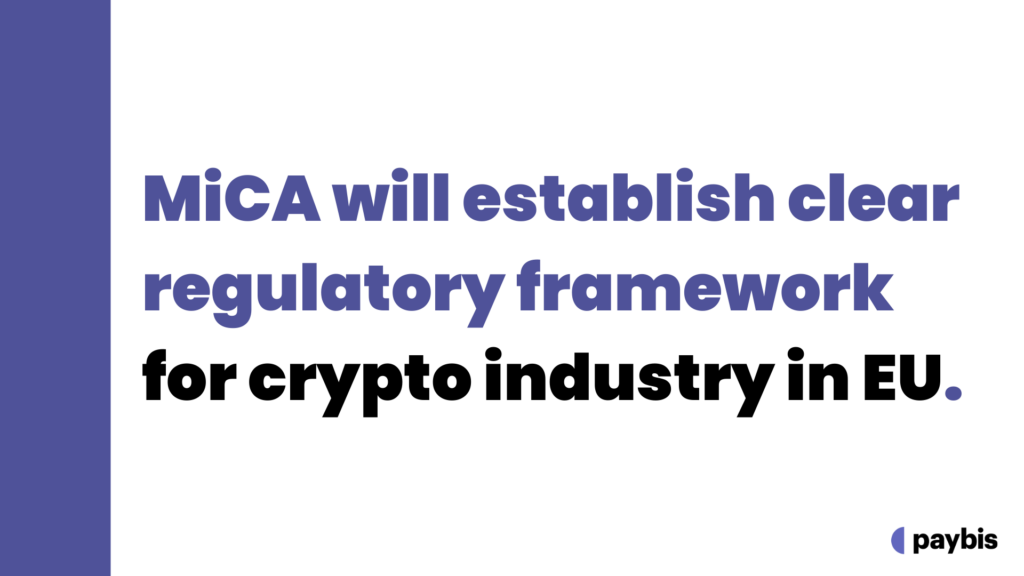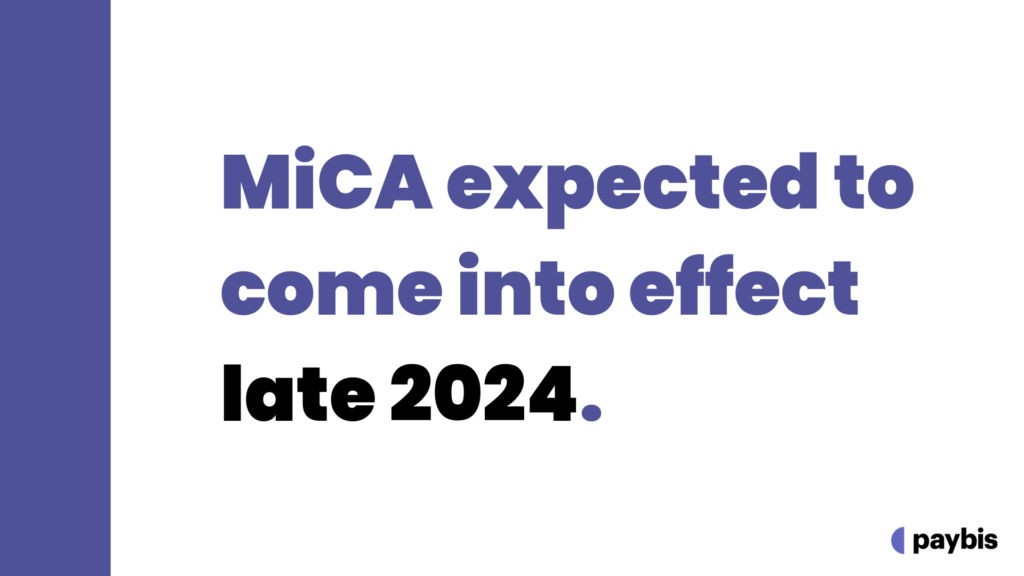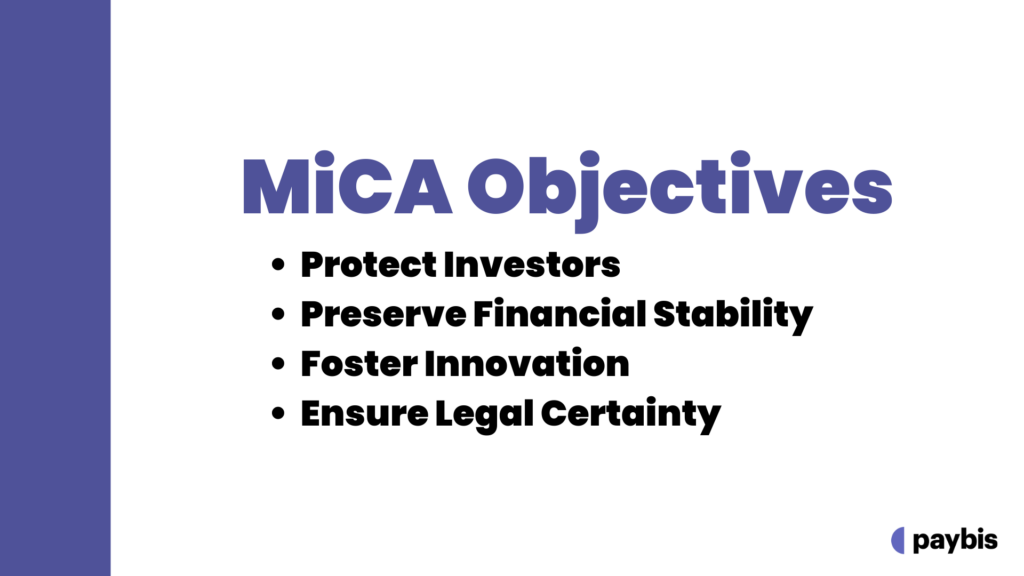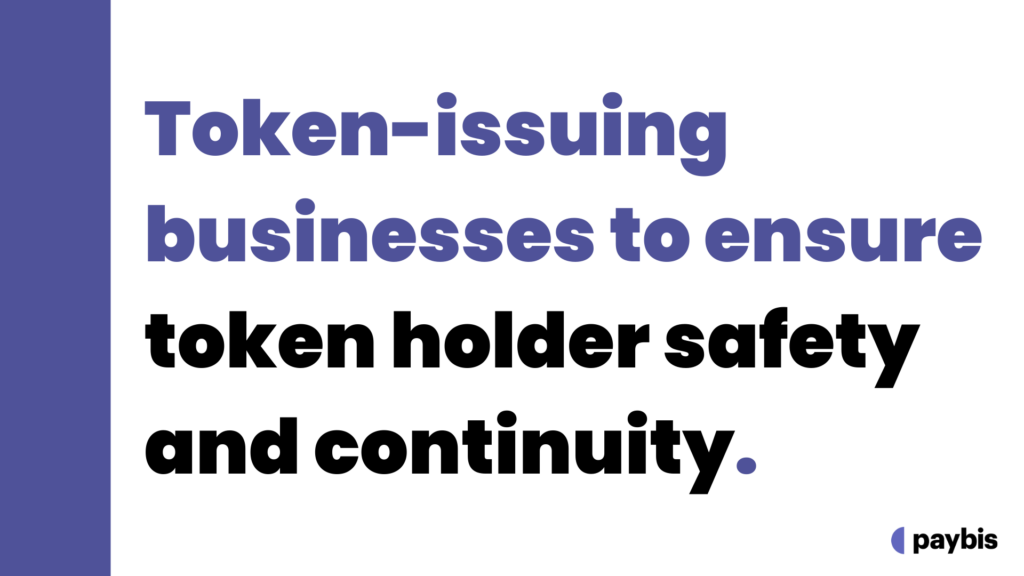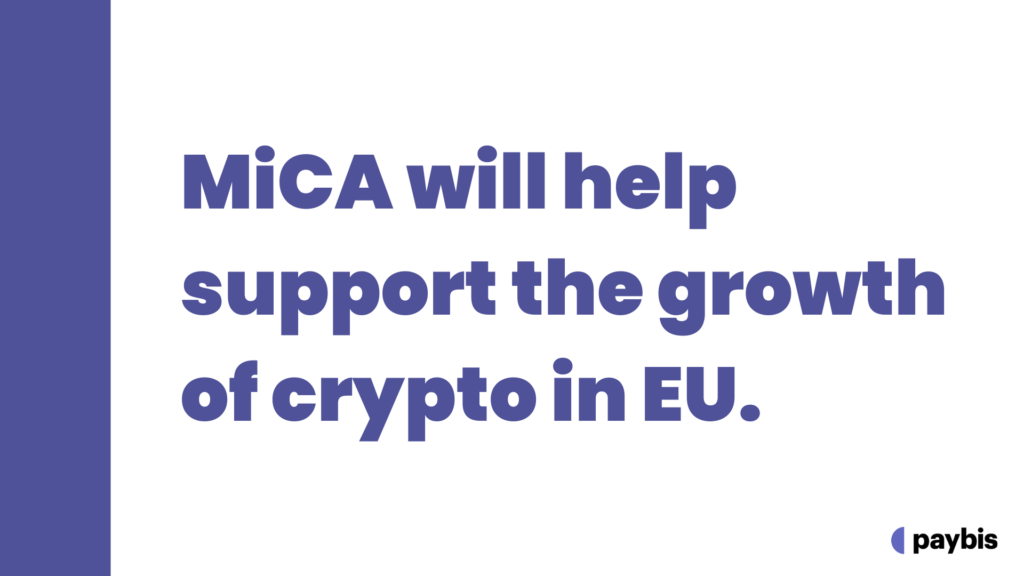MiCA Regulations Coming to EU
The European Union (EU) has long been recognized for its commitment to establishing uniform regulations that promote stability and transparency across its member states. In line with this tradition, the EU is now poised to introduce the Markets in Crypto-Assets (MiCA) regulations.
These regulations are set to have a significant impact on the crypto industry within the EU and are expected to shape its future landscape by providing a clear regulatory framework for the crypto industry to thrive.
The bill classifies crypto assets into three categories:
- E-money token (Bitcoin, Litecoin, etc.)
- Asset References Token (ART) (stablecoins, synthetic assets, etc.)
- Others (utility tokens and others)
Read the entire proposal here.
This article will dive into what MiCA means for cryptocurrency-related businesses operating in the European Union.
Table of contents
MiCA Timeline: When Will MiCA Come Into Effect?
Originally, the plan was to bring the bill into effect by mid-2023. However, it has since been delayed and is expected to come into effect by the end of 2024 at the latest.
A key thing to note is that the MiCA regulations will overrule any existing laws that are already in place in certain parts of the EU, creating a harmonized regime across the EU
At Paybis, we have already begun taking prompt steps to stay compliant with the changing regulatory landscape and are also incorporating these changes to our white label on/off-ramp solution. That way, our partners will have peace of mind knowing that our solution is MiCA-compliant.
It is also important that you are compliant, taking into account your business model. Use this article as a starting point to identify any forthcoming changes and plan for compliance.
Objectives of MiCA Regulations
The primary objective of the MiCA regulations is to ensure a secure, open, and transparent crypto market in the EU. It has four main objectives:
- Protect investors: MiCA will require crypto-asset issuers and service providers to comply with a number of requirements, including providing clear and accurate information to investors and taking steps to mitigate risks.
- Preserve financial stability: MiCA will introduce measures to prevent the use of crypto-assets for money laundering and terrorist financing. It will also require Crypto-Asset Service Providers (CASPs) to have adequate risk management systems in place.
- Foster innovation: MiCA will not prohibit the development of new crypto-asset products or services. However, it will require these products and services to comply with the regulation.
- Ensure legal certainty: MiCA will create a level playing field for crypto-asset businesses in the EU to attract investment and innovation to the EU, and to position the EU as a leading global hub for crypto-assets.
Categorization Based on Business Models
1. Asset Issuers
The proposal highlights that to ensure the safety of token holders, especially retail holders, and avoid unnecessary obstacles. Companies that create and distribute their tokens must adhere to specific guidelines and requirements.
Business should create clear processes to manage complaints from token holders, develop a conflict of interest policy, and establish strong governance practices, such as a transparent organizational structure with clear lines of responsibility.
To ensure the smooth functioning of their activities, the business must employ appropriate resources for their scale of operations and maintain consistency in performing those activities over time.
Additionally, the business would need to establish a business continuity policy to ensure the performance of its core activities related to the tokens in the case of an interruption to its systems and procedures.
2. Custodial Wallet Providers
CASPs that provide custody and administration services for crypto-assets are prohibited from using their clients’ crypto-assets for their own accounts.
CASPs must keep their clients’ crypto assets separate from their own and clearly distinguish their clients’ means of accessing these assets. They can also be held accountable for any harm caused by an ICT-related issue, such as a cyber-attack, theft, or malfunction.
CAPSs who are authorized to handle crypto-assets for third parties must create an internal custody policy that includes rules and procedures to ensure the secure storage and control of the assets and their means of access, such as cryptographic keys.
3. Exchanges and Other CASPs
The document outlines various regulations and requirements for CASPs, including cryptocurrency exchanges and those offering custody and administration of crypto-assets.
The regulations pertain to various aspects, such as how fees are charged, ensuring transparency, preventing market abuse, settling transactions, safeguarding consumers, and managing conflicts of interest. Exchanges should also disclose information and report incidences of market abuse.
Key Changes and Considerations
The MiCA regulations highlight several key changes and considerations that businesses operating in this space must be aware of.
Transaction Limits
The MiCA regulations proposal includes different limits on transactions, depending on the situation.
For example, if a company creates a token tied to a real-world asset (an ART), they need to make a plan if they expect more than 1,000,000 transactions per day or if the total value of those transactions exceeds EUR 200 million in a specific currency area.
Another example is that companies offering crypto-assets with a limited time for the public to buy them must have systems in place to monitor and protect the funds or assets collected during the offer.
Compliance with Regulators
Companies that create important tokens linked to real-world assets have particular responsibilities when it comes to adhering to regulations. It’s imperative for these issuers to meet certain standards in order to guarantee the dependability and consistency of tokens tied to assets. This measure is intended to safeguard those who hold the tokens and uphold trust in the market for asset-referenced tokens.
In addition to following these rules, issuers of asset-referenced tokens also have to report certain information to help regulators keep a close eye on token activities and ensure proper oversight.
Competent authorities are also required to inform the European Banking Authority (EBA), European Securities and Markets Authority (ESMA), and European Central Bank (ECB) about any authorizations that were not granted.
Need for Setting up European Entities
To comply with European regulators, businesses may need to consider the establishment of European entities. This involves creating a legal presence within the European Union (EU) to align with local regulations and requirements.
By setting up an EU entity, businesses can demonstrate their commitment to operating in accordance with EU laws and regulations.
Recommendations for Businesses
Seek Professional Advice
Navigating the intricacies of MiCA regulations can be complex, and professional guidance from experts well-versed in the evolving regulatory landscape is invaluable.
Paybis encourages our partners to seek professional guidance tailored to their business requirements.
Understand Compliance Requirements as per Business Model
Understanding the specific requirements based on your business model is another crucial step. MiCA regulations encompass a wide range of crypto-related activities, and it is essential for B2B businesses to grasp how the regulations apply to their specific operations.
Stay Updated with Upcoming Regulations
Staying updated on MiCA developments and regulations is vital in this rapidly changing landscape. The crypto industry is dynamic, and regulatory frameworks continuously evolve to keep pace with technological advancements and emerging risks.
Businesses must proactively monitor MiCA developments, including updates, amendments, and guidelines issued by regulatory authorities. This ensures they remain well-informed about any changes that may impact their operations and enables them to adapt swiftly and effectively.
Conclusion
The significance of preparing for the upcoming changes brought about by MiCA regulations cannot be overstated.
For some businesses, this is a much-needed relief, while for others, this is a minor bump in the road.
By taking the necessary steps to align their operations with MiCA requirements, businesses can position themselves for success in the long run.
As the MiCA regulations take effect, businesses prioritizing preparation, compliance, and collaboration will undoubtedly emerge as leaders in the crypto industry.
At Paybis, we are ready to work with you at every step of the day to ensure the collective success of the partnership and bring crypto closer to mainstream adoption. Your success is our success.
Disclaimer: Don’t invest unless you’re prepared to lose all the money you invest. This is a high‑risk investment and you should not expect to be protected if something goes wrong. Take 2 mins to learn more at: https://go.payb.is/FCA-Info

